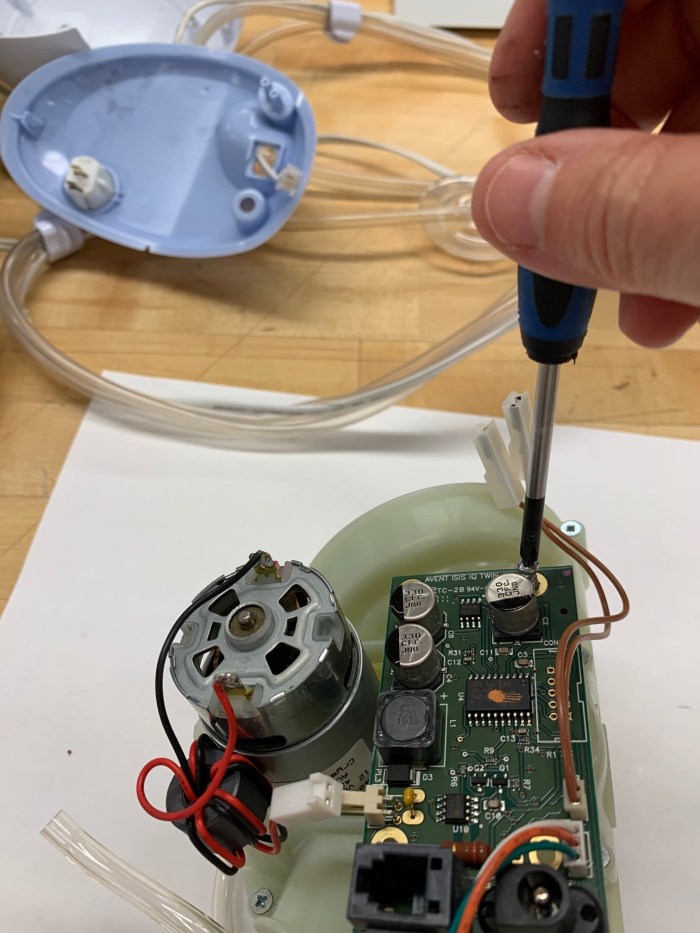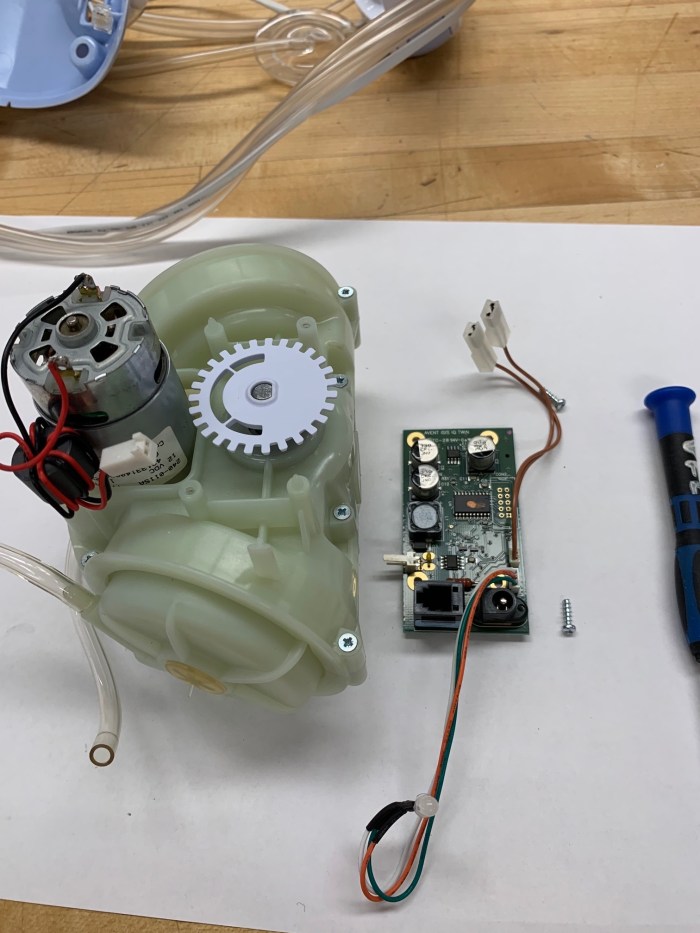Carter Brigham
























The materials in the pump were hard plastic (high-density polyethylene- HDPE), plastic tubing (polyurethane), gears (steel, gear oil, magnet), flexible diaphragms (polyurethane, hard plastic fittings to attach – HDPE), clips (HDPE), screws (steel), screw covers (polyurethane), circuit board (copper-plated fiberglass material, epoxy resin, polyamide and polyester film), resistors (metal, PVC insulation), capacitors (electrodes, metal plates, dielectric insulating material, ceramic material), microchip (semi-conductor material, silicon, wires -copper, PVC insulation), motor (steel, wire, brush, electro-magnet, gear oil).
Manufacturing techniques needed to make a breast pump include, but are not limited to, injection molding for hard plastic (reciprocating screw, venting air, coolant, ejector pins/sprue removal, stamping), machining aluminum mold for injection mold (16,000 lb machine, reamers, end mills, torque wrench, gauges, cobalt steel twist drill, coolant), electrical wire (copper block, lubricated pulleys dye and stretch, low voltage conductors, insulated plastic extrusion machine, coat with PVC, precision laser confirm uniformity, cool in water trough, stamp information, voltage test), plastic tubing (vacuum hose, dry, augers mix, heat, extruder, heat, cool in trough, pulled through water through rollers, laser measure uniformity, pull by conveyer), gears (automated band saw slice, drill, cool, turret with blades drill, stamp, titanium cutter shape gears’ insides, gear hopper cuts outside, furnace, inject with carbon, grinder), circuit board (cut board, apply resin and film, etch, chemical bath), resistors, capacitor, motor, microchip (ventilation, vacuum to maintain dust-free space, cut silicone, oxidize in furnace, centrifuge, stepper exposure machine, plasma etching).
To take apart the breast pump I used a Phillips-head screwdriver, a wrench, hand saws and my hands.
The designers chose to create a device that allows the machine to mimic the woman’s own baby’s sucking rhythm. By manually pumping, she can press a button on the handle when she finds a match. The machine will then repeat or ‘remember’ the timing. I don’t understand how this works but it is the selling point of this model.
An electric breast pump exists because the diaphragm covers the breast and the motor pulls at regular intervals mimicking the real experience so milk is released and expressed into an easy-to-use container. The action begins with sharp, short pulls of suction and then increases to longer and stronger motions. As a working mother this invention made my intentions for the health of my babies what I wanted.